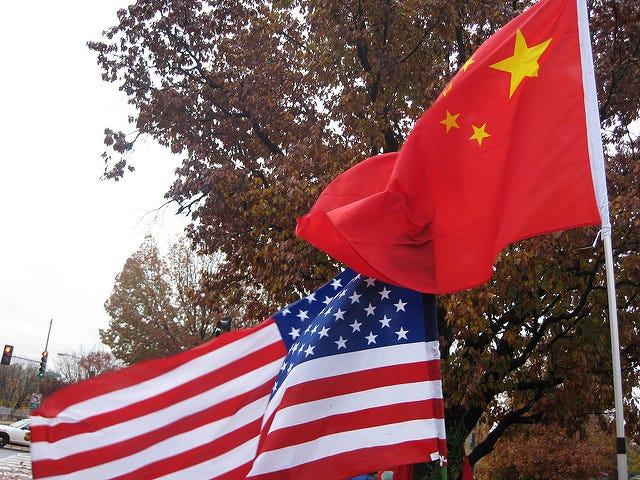Trump’s Trade Team Must Stay Tough During High-Level Talks in China

For almost a year, Donald Trump’s steel and aluminum tariffs were less of a reality than a question of whether he would implement them at all. And his broader China trade strategy could have been described as “speaking loudly but carrying a small stick,” the Teddy Roosevelt philosophy stood on its head.
He then began the process of keeping some of these promises, roiling Republican party leaders and free-trade ideologues elsewhere who were surprised that a president who campaigned on a blatantly aggressive trade policy would do such a thing.
Now comes another question: Will he stick by these tariffs?
It’s hard to say with a president as mercurial as Trump. But we’re about to see his commitment to them tested, as a “Magnificent Seven” of Trump administration trade officials head to China to discuss with their counterparts the tensions of which these tariffs are a part. If his commitment to them crumbles, it will say a lot about what this administration can accomplish in its stated goal of resetting our trade relationship with the world’s second largest economy.
Before we get to that, though, let’s talk more about these actual and threatened tariffs. The United States (until their imposition) was home to the most open steel and aluminum markets in the world, and our domestic industry has long complained about having to compete with rivals who set impossibly cheap prices.
These remain the facts on the ground, and Trump’s tariffs are an attempt to quarantine the American market from unfairly priced steel and aluminum. Exemptions for American allies (like those temporarily extended to the European Union) and for important neighbors (like Mexico and Canada) are permissible, but they shouldn’t be permanently removed for anyone.
And they must be non-negotiable when our trade negotiators sit down in China this week.
The steel and aluminum market distortions are indicative of the larger problems trade with China has caused. After helping it enter the World Trade Organization in 2000, there was a lot of optimism that China would liberalize. That certainly hasn’t happened politically, and it has happened economically either.
Significant portions of its economy are dominated by state champions. Its government has presided over a vast, years-long campaign of intellectual property theft, some of it directly carried out by the state. It has made promise after promise to rein in this behavior, and it consistently fails to do so.
All of those IP concerns (and the threatened tariffs on $50 billion, or perhaps $150 billion, worth of Chinese imports) will be on the table, this week, too, as they should. Forced technology transfers, piracy, and other restrictions cost the U.S. economy up to $600 billion.
China should not be let off the hook because global businesses or markets are getting cold feet. The status quo is more appealing to some, but our economic relationship needs serious disruption. More than a decade of cajoling hasn’t worked. Credible threats to reduce China’s market access will. Beijing has pulled back from currency undervaluation, for example, only under duress.
And while we can’t change China’s authoritarian state-capitalist model, we can certainly contain the features of it that most damage our ability to generate good jobs in America.
If his tweets are our guide, President Trump seems to understand that the fundamentals of the bilateral U.S.-China trade relationship must change. And if he truly gets that, his representatives won’t be misled by shiny objects that Chinese negotiators will present — like a reduction in high auto tariffs it’s maintained for years, or promises of incremental cuts to steel production.
I’m hopeful they won’t; remember when Commerce Secretary Wilbur Ross last year returned from a “100 day action plan” with the Chinese with minor concessions, and the president reportedly dismissed them as small potatoes?
There’s a good chance that reasoning holds true today. So keep the tariffs in place, until real reform takes place. And let’s see what comes of the Trump administration’s trade negotiations in China.
***
Reposted from AAM

